Affiliate disclosure: This post may contain affiliate links. Please see our Privacy Policy.
A figure 4 deadfall trap is one of the easiest primitive traps, and all you really need is a few sticks, a sharp knife, and bait.
There’s no cordage or complicated snare knots, just the simple tension of a few sticks holding a big rock in position, just waiting for the right animal to trigger it.
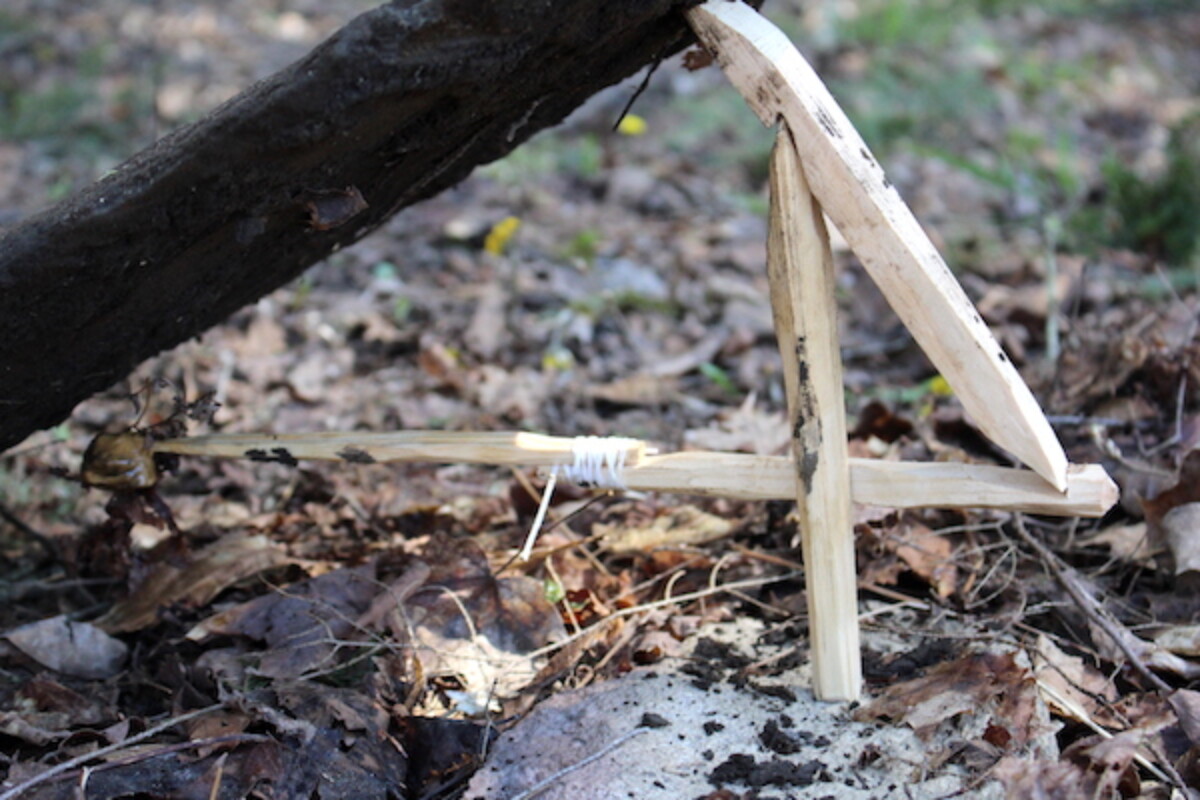
In its simplest form, a figure 4 trap starts with just three sticks, each about 8 inches long and 1 1/2 inches in diameter. From there, each stick can be carved into a simple tension deadfall trap that comes together without any cordage or snares.
The weight of the rock pushes down on the sticks, and if the notches are crafted right, this creates tension that holds the whole deadfall trap together. It’s a precarious balance though, and all it takes is the tiniest touch on the baited end and the whole structure comes crashing down…ideally mashing your prey.
Figure four traps are wonderful if you live in an area with an abundance of large, flat-ish rocks like my home in Vermont. These types of deadfall traps are best suited to small game, such as squirrels or possibly raccoon if you find (and can move) a big enough stone.
How to Make a Figure 4 Trap
I’m starting with three pieces of dry white pine, split like kindling. The straight grain makes carving much easier, but really any branch you can find in the woods will work.
This deadfall trap has three pieces, and for simplicity, I’ll refer to them as the vertical piece, diagonal piece and trigger piece. I’ve added a 4th piece to extend the trigger deeper under the rock and lashed it together with a bit of twine, but that piece is unnecessary I found.
The vertical piece is the easiest to carve, so start there. It’s basically just a stick with a pointed end. The point isn’t carved on all sides, just two of the faces, so it comes to a long linear point at one end.
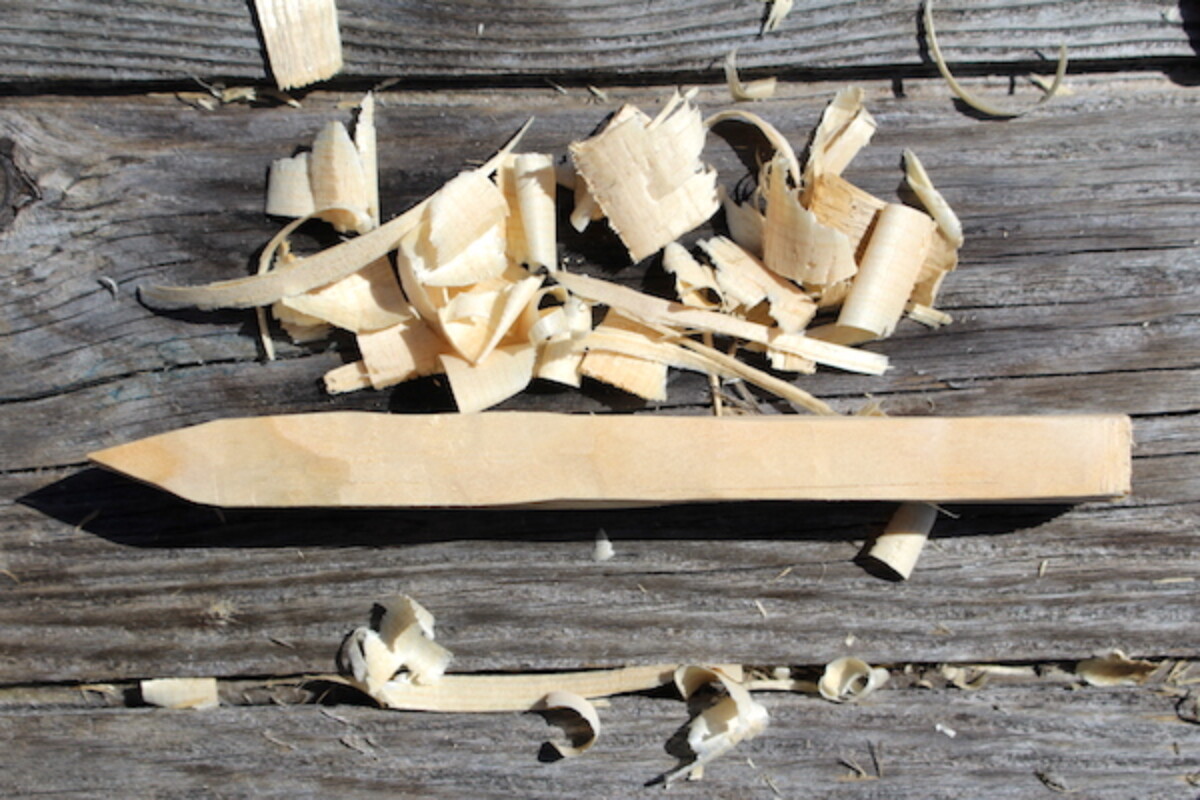
The base end remains flat because that’s going to rest on the ground, or more specifically, another flat rock placed on the ground. Otherwise, the heavy rock pressing down on top would just drive it into the ground like a stake. Even a small-ish flat rock, maybe 4” in diameter prevents this, and also makes it easier to set the trap with a flat surface as a work area.
Here’s the vertical piece set into the figure 4 trap. All it needs to do is hook into the notch on the diagonal piece.
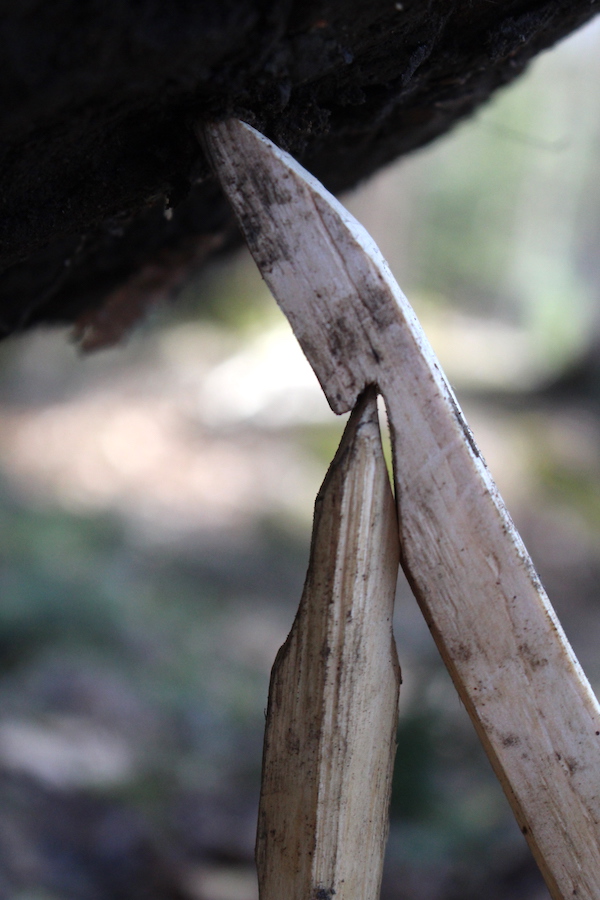
One more important thing to note about this first piece…the sides need to be squared off. This is important, as you’ll see later, since it allows the trigger piece to hook onto this stick.
Carving the Diagonal Piece
Next up is the diagonal piece, which is a bit more complicated, and has carved portions on both ends. The top comes to a rounded point where it will support the rock, and underneath it has a small notch for holding the vertical stick in place.
Start by rounding off the top end, and then notching into the stick about 2 inches below that. The notch should have a bit of a hook to it, which will help keep the vertical piece in place when they’re connected.
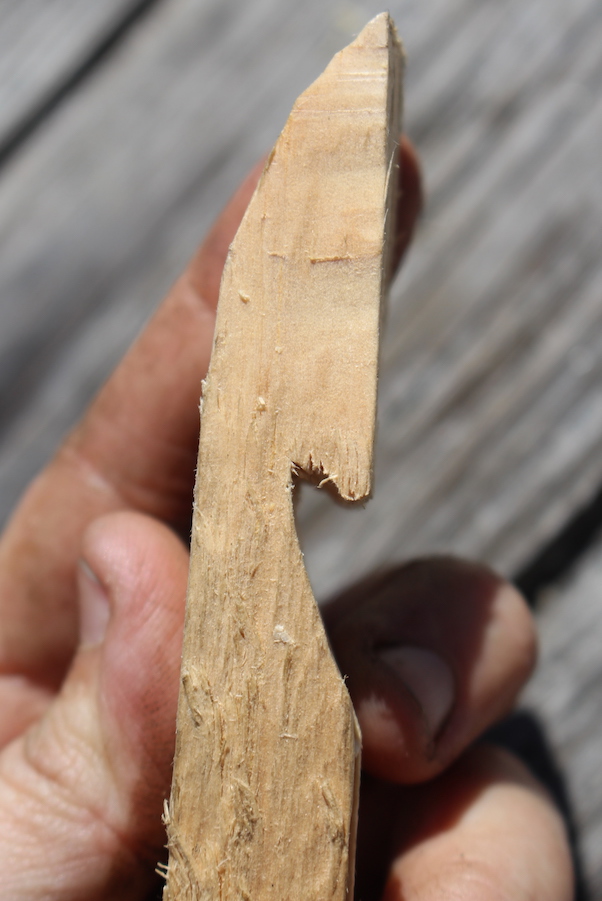
Carve the bottom of that same stick into a point, working just two sides so you have a long seam to hook into the 3rd piece (trigger piece).
Here’s what the diagonal piece should look like when finished:
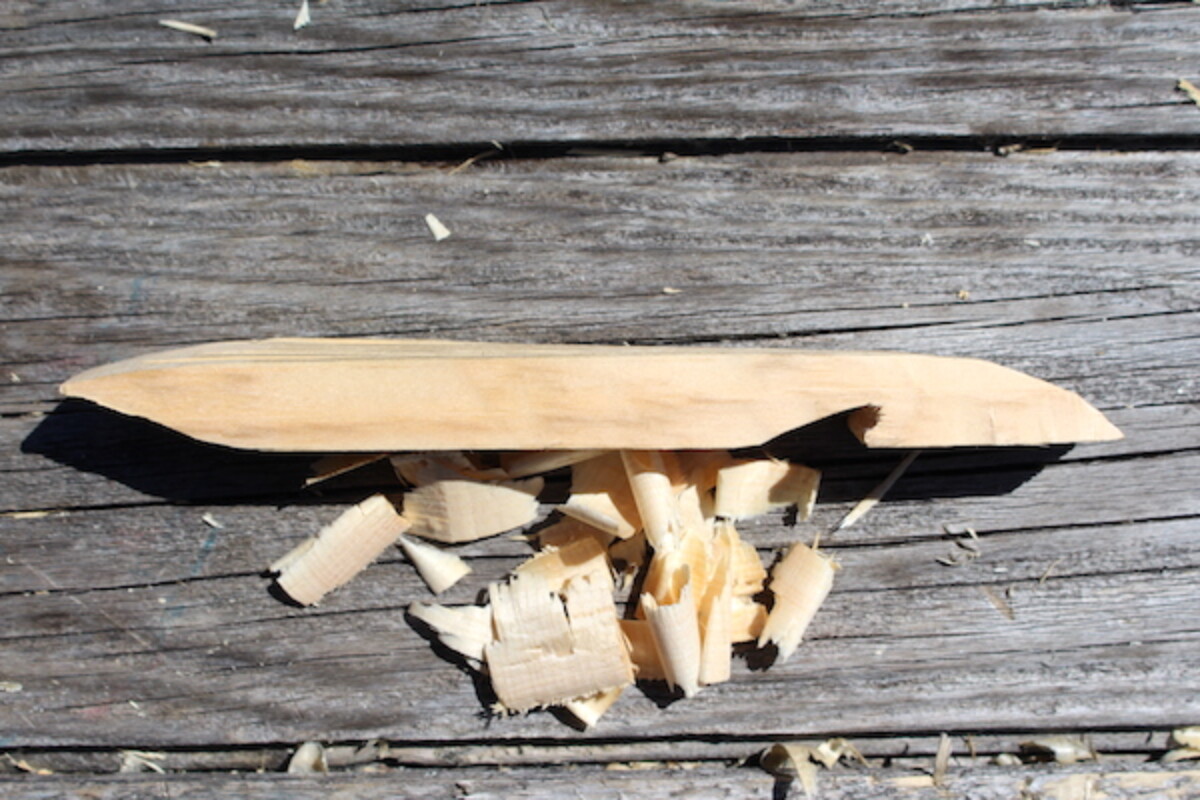
Carving the Deadfall Trap Trigger
The final piece is the trigger stick or the horizontal piece in the figure 4 trap. This piece is the most complex because it needs to support the diagonal piece and hook onto the vertical piece. It hooks onto the side of the vertical piece, which is what creates the trigger tension.
Downward force from the weight of the rock above is pressuring the diagonal piece and trying to pull the trigger piece backward. It’s notched and hooked around the vertical piece, which is what holds the whole deadfall trap together until it’s tripped.
As I mentioned earlier, the vertical piece needs to be squared off so that the trigger piece can hook onto it. This is why…
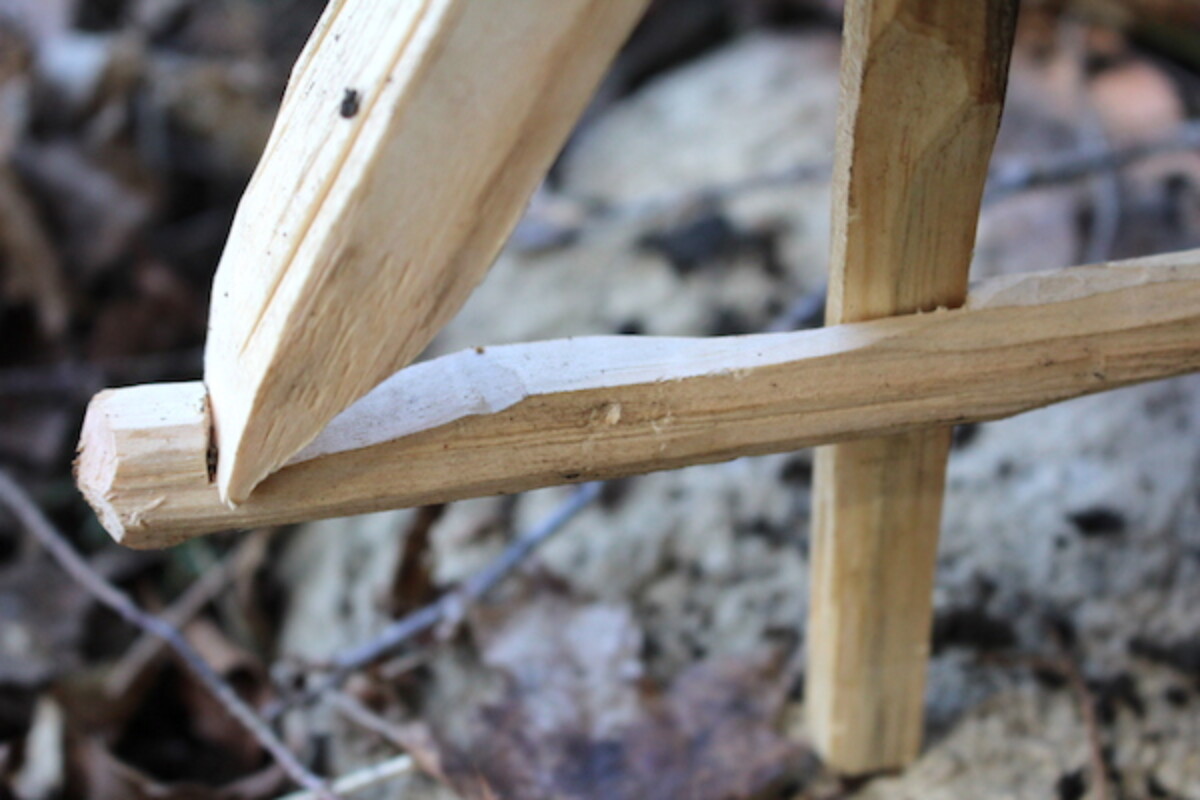
Start by carving a notch at the back of the stick for the diagonal piece to rest against to tension the trap. Be sure to leave enough wood at the end that it won’t break out at the end when under stress. About an inch should do.
This notch should fit nicely into the bottom of your diagonal stick, and hook it in there with a bit of tension. Test the shape against your diagonal stick. This is the first of 3 different carved sections on the trigger stick.
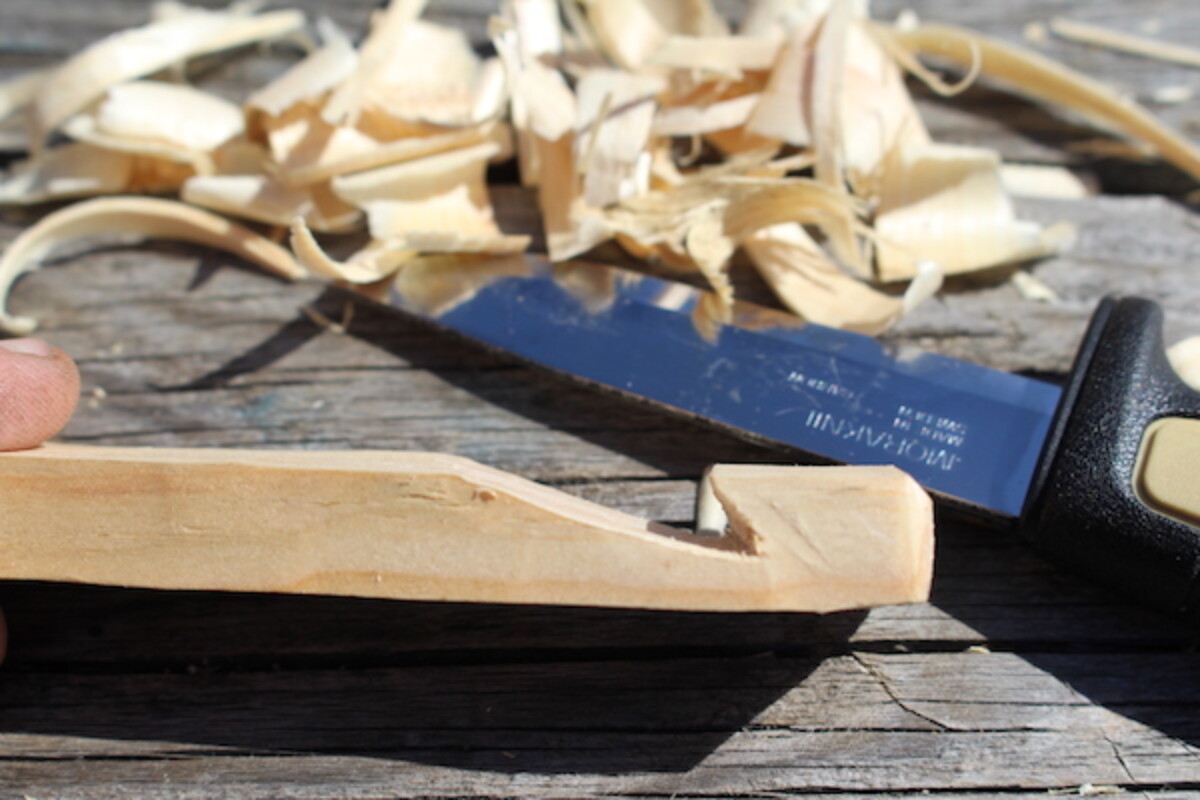
Next, go to the other end and carve it into a narrow point to hold the bait. In my case, I’m using peanut butter, and more practically in the woods you might be using a tiny piece of meat or fruit and you’d need a sharp point to stick it to the trigger stick.
This is the most open-ended part of the whole trap, and really you can make it look like just about anything you’d like. Something small, so the animal has to nudge it a bit when they try to take the bait works best.
I could also imagine an alternate configuration where this trigger end is just a thin shelf to support some kind of seed or nut. It really depends on the bait you’re using, and how you want to dangle it out there.
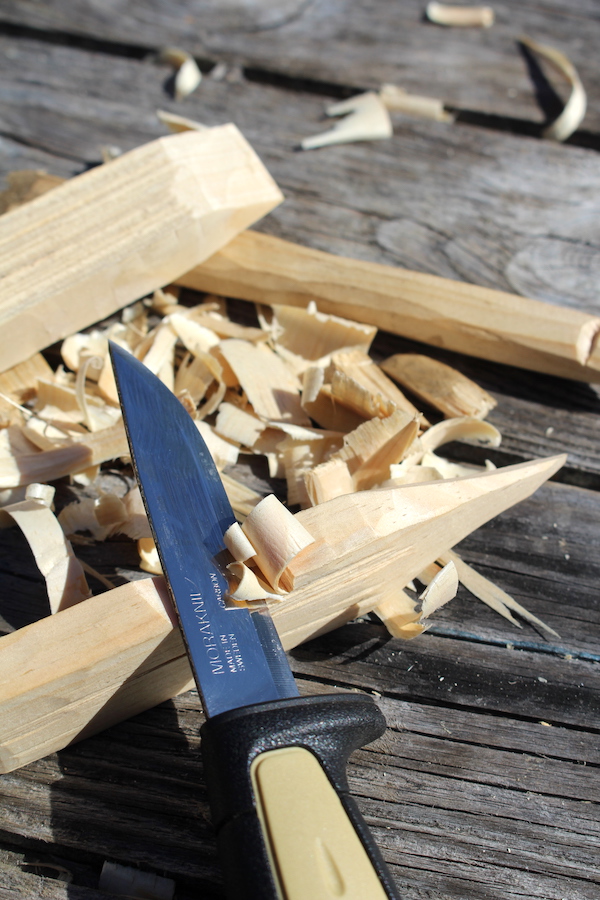
Once you have that notch and the trigger point finished, place the pieces in figure 4 position to figure out where the side trip notch needs to be placed. This will vary a bit, based on the size of your wood and how you’ve carved the notches up to this point, but it should be about half way up the side of the trigger stick.
Carve the trigger notch out square so that the trigger stick hooks around the vertical stick. The finished trigger stick should look like this:
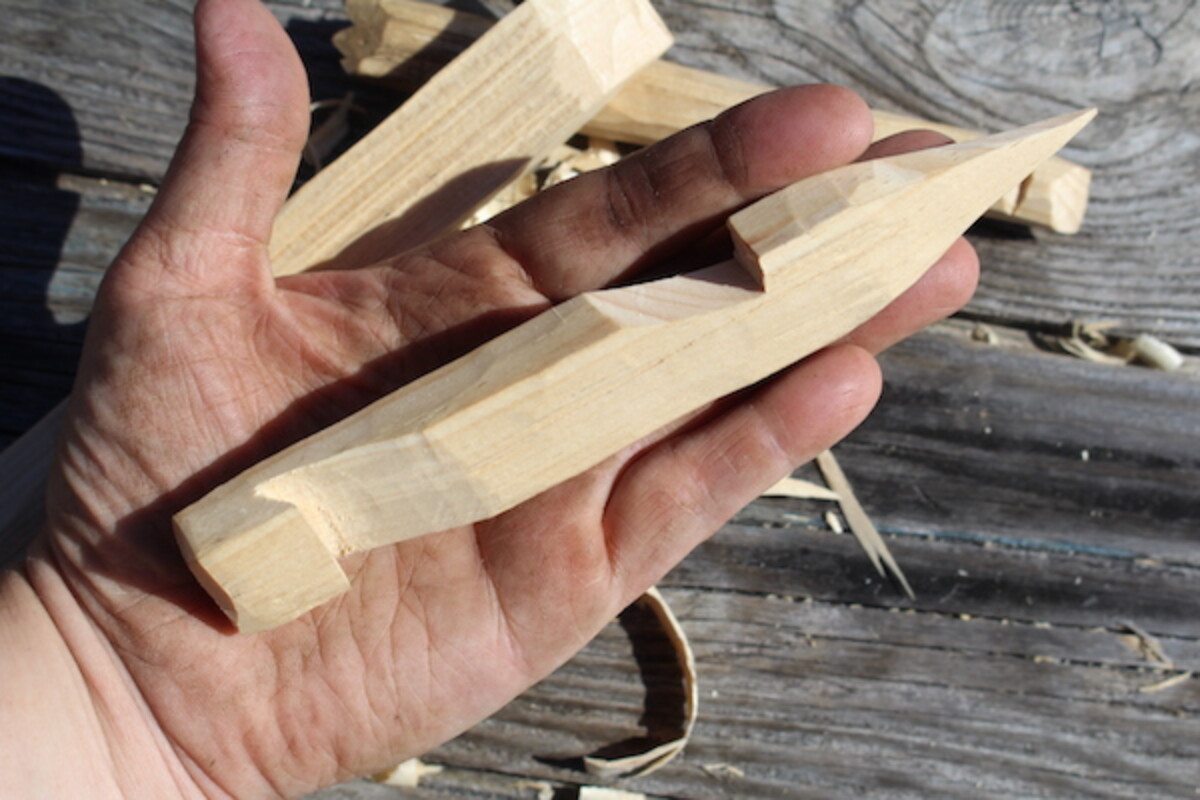
When I made this, I was concerned that my trigger stick was too short. As you can see, the side notch is about 2/3rds down the side of my stick and there’s not much trigger past the vertical stick on the figure 4.
I took another stick and lashed it together to extend the trigger further under the rock. In hindsight, that was completely unnecessary and the short trigger would work just as well.
I had a particularly long rock, so this trigger extension really gets the bait far underneath it. That’s totally optional, and actually limits the prey I can catch by putting the bait in a very small space.
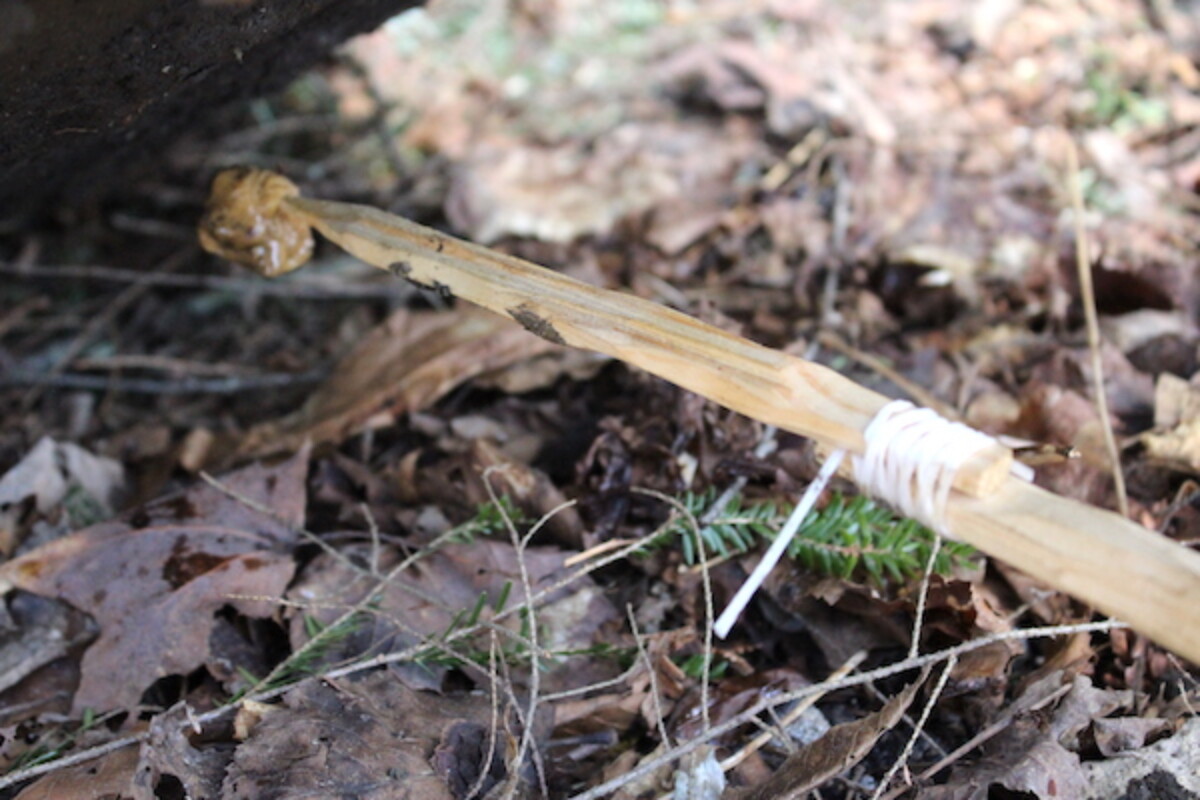
A shorter trigger might mean catching something like a raccoon, but this long trigger placed far under limits the trap a bit. Luckily, I was targeting a tiny red squirrel that the best squirrel traps I could find hadn’t yet managed to catch. He was fun to watch, but when he took up residence inside the ceiling of my house we had to make other arrangements.
Be careful, of course, to check any local restrictions on trapping if you plan to deploy your deadfall trap. Also be aware that the trap will crush anything that trips it…including children, pets or toes.
If you do catch small game, try out any of these squirrel recipes. We really enjoyed traditional Brunswick stew, and country fried squirrel with gravy is a great breakfast.
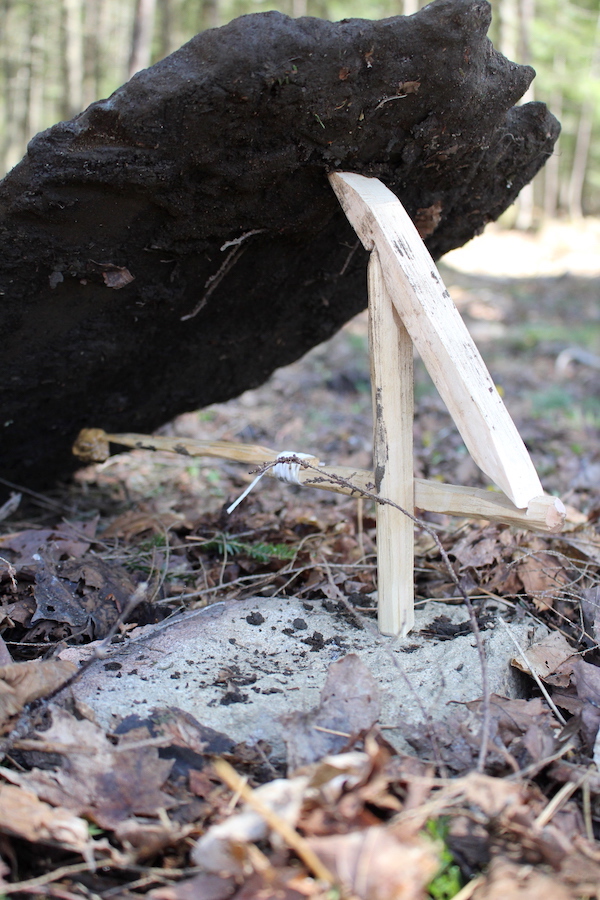
All in all, the whole deadfall trap took me about half an hour to carve, sitting at the picnic table in our yard while the kids played nearby with their Tonka trucks. I don’t have a smartphone you see, so that means I get fun project time anytime the kids are self-entertaining. This, I can tell you, was a much more satisfying way to spend a few quiet minutes than scrolling Instagram.
It was a fun skill to practice, long in advance of being in a wilderness survival situation where I needed to harvest food with minimal equipment. Even lacking a knife, this trap could be made by carving with a sharp rock. It’d take a lot longer, but you could make it happen if you had to.
For me, it’s nice to know I have that skill under my belt, and now I’m looking forward to learning other types of traps.
More Bushcraft Skills
Looking for more bushcraft skills tutorials? Read on my friends…
- How to Clean & Gut a Groundhog
- How to Clean a Squirrel in Under a Minute
- Making Fatwax (Animal Fat Salve)
- How to Render Squirrel Fat (for Cookies!)
- How to Process Soil into Clay for Pottery
- How to Make Primitive Arrows
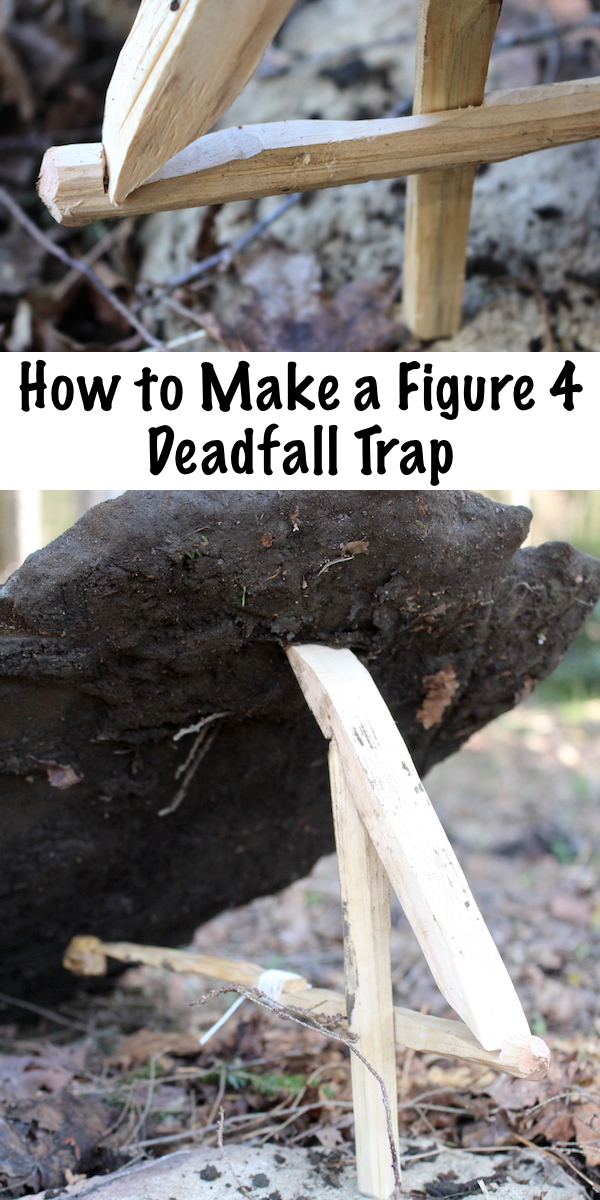
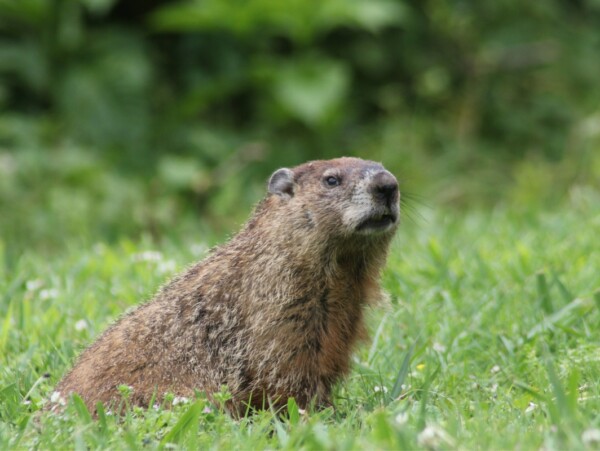
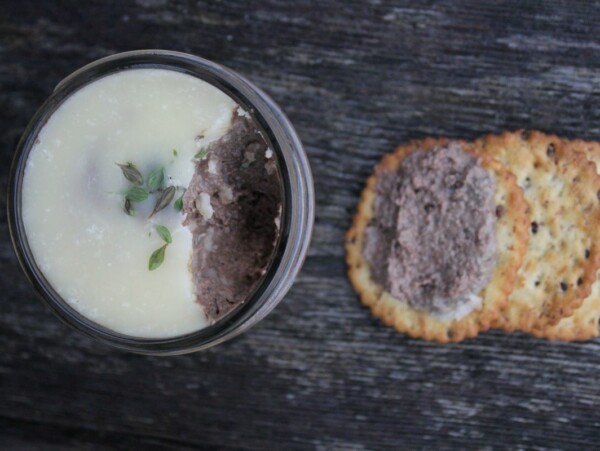
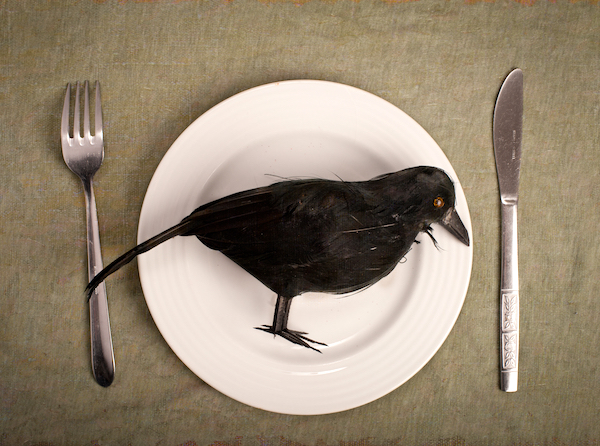











Thanks for the information. This is great! Is there a printer-friendly version of this document available?
No I’m sorry we don’t have a printer friendly version.
I made one to catch some squirrels. It sits in the middle of my lawn to hunt squirrels for lunch and dinner.
Would recommend lowering the angle of the trap to around 30 degrees, as well as insuring thebweigh be 5 times the weight of the target species. This increases the chance of success .
Awesome article and illustrations!
Did you succeed in getting the red squirrel?
You bet!
So did you get the squirrel? 😉
You betcha!
Good stuff and great illustrations